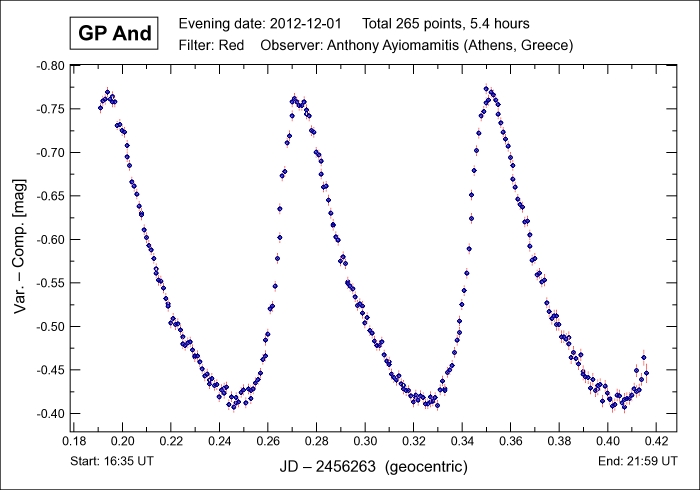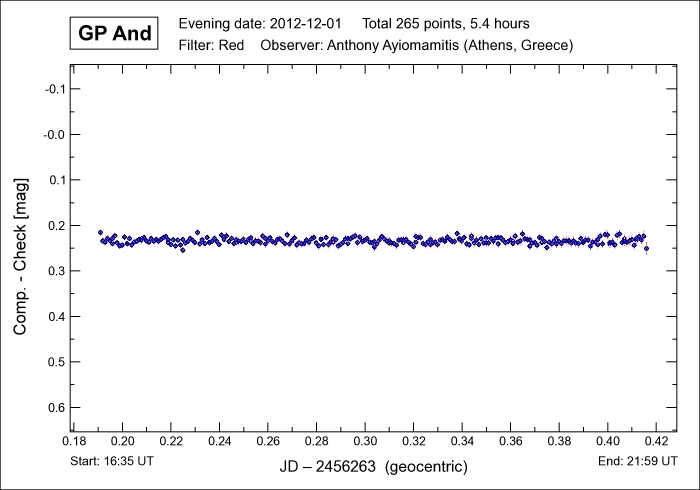
A variable star, as its name suggests, is a star whose magnitude varies intrinsically, in contrast to eclipsing
binaries whose magnitude varies as a result of one star in the binary system eclipsing the other. True variables are
one of five types, namely Mira stars, semiregular stars, cepheids, eruptive variables and, finally, cataclysmic
variables. Minimum to maximum magnitude can range from days to many months with some variables displaying irregular
periods.
A popular method for the study of variable stars, particularly short-term variables, is by the use of the technique
known as "differential photometry". Rather than measure the (variable) magnitude of a variable star on an absolute
scale, measurements are made over time relative to one or more non-variable star(s) and these differences are then
plotted so as to study and illustrate the relative or differential change in magnitude. Due to the very large number
of variables stars, the field of differential photometry represents one of the key fields in astronomy whereby the
amateur astronomer can make a meaningful and long-lasting contribution to both science and astronomy.
More recently, the search for extrasolar planets (over 750 discovered so far) has identified yet another interesting
application for the practice of differential photometry whereby the minute drops in magnitude of a star hosting an
exoplanet are studied. Further details for the interested party are available
here.
Note: The large-amplitude short-period pulsating star GP And is a fast pulsating variable
star with a period of 113.30 minutes and which involves a delta mag of 0.60 (R) magnitudes during this brief time
interval. GP And is a delta Scuti variable and whose variable nature was discovered by W. Strohmeier, R. Kippenhahn
and E.Geyer in 1956. GP And is a particularly well-studied variable star due to some studies (ex.
Gieseking
et al, 1979) which have suggested both a variable amplitude and a variable shape for the light curve.
Further details from the International Variable Star Index are available
here whereas an AAVSO finder chart is available
here.
|
Variable Star: GP And Other Designation: HIP 4322 RA / Dec: 00h 55m 18s / +23° 09' 49" Magnitude: 10.23 - 10.83 Period: 0.07868270 days Variability: DSCT Spectrum: A3 Comparison Star: GSC 1739:1521 Check Star: GSC 1739:1964 |
 
|
Date: Dec 01-02, 2012 18:35 - 00:00 UT+2 Location: Athens, Greece Equipment: AP 305/f3.8 Riccardi-Honders AP 1200GTO GEM SBIG ST-10XME SBIG CFW10 SBIG LRGB filters Integrations:
Temperatures:
Software: CCDSoft V5.00.201 AIP4Win V2.4.0 Processing: Reduction Differential Photometry |